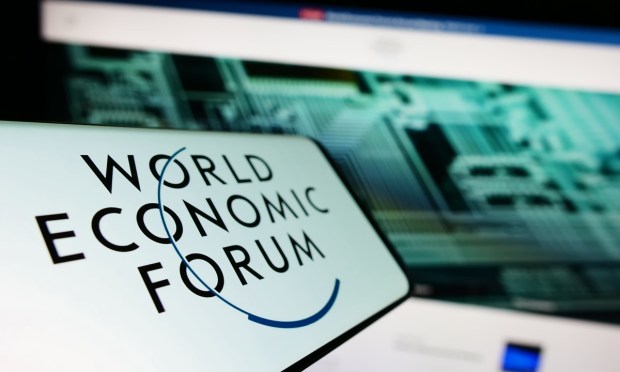How the World’s Most Urgent Risks Could Impact Payments

Systemic shifts are taking place across the global economy, bringing with them new, urgent risks.
But importantly, within the many era-defining changes underway, including the double-edged sword of generative artificial intelligence (AI) capabilities, exists an emergence of unique opportunities — particularly for the payments industry.
This, as the World Economic Forum (WEF) on Wednesday (Jan. 10) published its 19th Global Risks Report.
While environmental, geopolitical and societal risks featured heavily in the gloom-and-doom outlook, technological and economic risks categories were also flagged across near-term (two-year) and long-term (10-year) event horizons.
Misinformation, disinformation and synthetic media were together identified as the top risk facing the world in the next two years, a risk area that PYMNTS reported on Wednesday in the “Attack Vectors 2024” series.
Underscoring the urgency of synthetic information’s threat, it also ranked as the fifth most important threat to corral over the next 10 years, and was the top technological risk given by the WEF in the long term, followed by other adverse outcomes of AI technologies sixth (ranked 29th over the next two years) and cyber insecurity eighth (ranked fourth in the near term).
Read also: Misinformation Fears Surge as Increasing Gen AI Use in Finance Amplifies Risks
Other non-environmental threats flagged for the next two years include lack of economic opportunity (ranked sixth) and inflation(seventh), as well as the potential for a recession or economic downturn (ninth).
As PYMNTS Intelligence finds, cost-of-living pressures continue to bite spending outlooks particularly amid persistently elevated inflation and interest rates, and debt was ranked by the WEF as the 16th most urgent near-term risk, and the 17th most important long-term threat, with supply chain disruptions also being flagged as a top 25 risk in both time frames.
Still, the future is not fixed. Every risk carries with it a kernel of opportunity, and the only constant certainty among the multiplicity of different futures that could play out over the next decade is the simple fact that each will have a sizable impact on the payments landscape.
Capturing the Benefits of Digital Transformation While Avoiding the Risks
Industries worldwide are on, or have already gone over, the brink of an ongoing technological transformation being accelerated by digital innovations.
There is a need for an understanding of the immediate, mid-term and long-term implications of these technologies for each organization’s cybersecurity posture, as the WEF notes, especially given the degree to which cybersecurity and cybercrime trends are driven by technological developments.
“In cyberspace you have something called a zero-day attack, which basically means you’re going to get attacked on day zero, and you’re going to be attacked before you even know what the solution is. Because the bad actors are way ahead of you,” Shimon Steinmetz, chief financial officer at risk assessment and fraud prevention solution Vesta, told PYMNTS.
The gap between organizations that are able to make themselves cyber-resilient and those that cannot is growing. For example, per the WEF report, cyber attackers are adopting new technologies, such as generative AI tools, to increase the number of markets they can target. Responding to this requires investment and the acquisition of talent that many organizations are either unable to meet or are unaware of. Because of this, the proportion of organizations that can either protect themselves or recover from a cyberattack is diminishing.
“Fraudsters, as a general rule of thumb, tend to be very sophisticated and are always finding new ways to defraud individuals and businesses,” Doriel Abrahams, head of risk in the U.S. at fraud prevention provider Forter, told PYMNTS.
PYMNTS Intelligence finds that companies relying on legacy reactive and manual digital identity verification solutions lose above-average shares of annual sales to fraud, at 4.5%. However, firms using proactive and automated solutions, such as those powered by AI and ML, reduce their share of lost sales to 2.3%.
As the WEF explains, this gap in cyber equity is likely to grow even more stark.
Read more: The Eight Pivotal Strategies for Payments and the Digital Economy in 2024
The Ongoing Opportunity Within Payments
Economic uncertainty is set to continue to weigh heavily across most markets, making innovative lending and financing solutions critical going forward.
According to PYMNTS Intelligence research, the number of financing sources small and medium-sized businesses (SMBs) need to run their business is higher than those available to them. This lack of financing is particularly concerning in some specific business segments, with young and smaller companies most severely affected.
What’s more, in order to effectively control for supply chain disruptions real-time data intelligence and a broader adoption of end-to-end logistics tracking solutions and platforms are needed to best insulate firms from uncontrollable events.
The payments industry finds itself at the intersection of peril and promise. Despite economic uncertainties, the payments sector holds an ongoing opportunity for innovation, with the imperative for innovative lending and financing solutions. As the world grapples with multifaceted risks, the payments landscape stands as a focal point for transformative change, requiring a delicate balance between navigating challenges and seizing emerging opportunities in the evolving digital economy.
